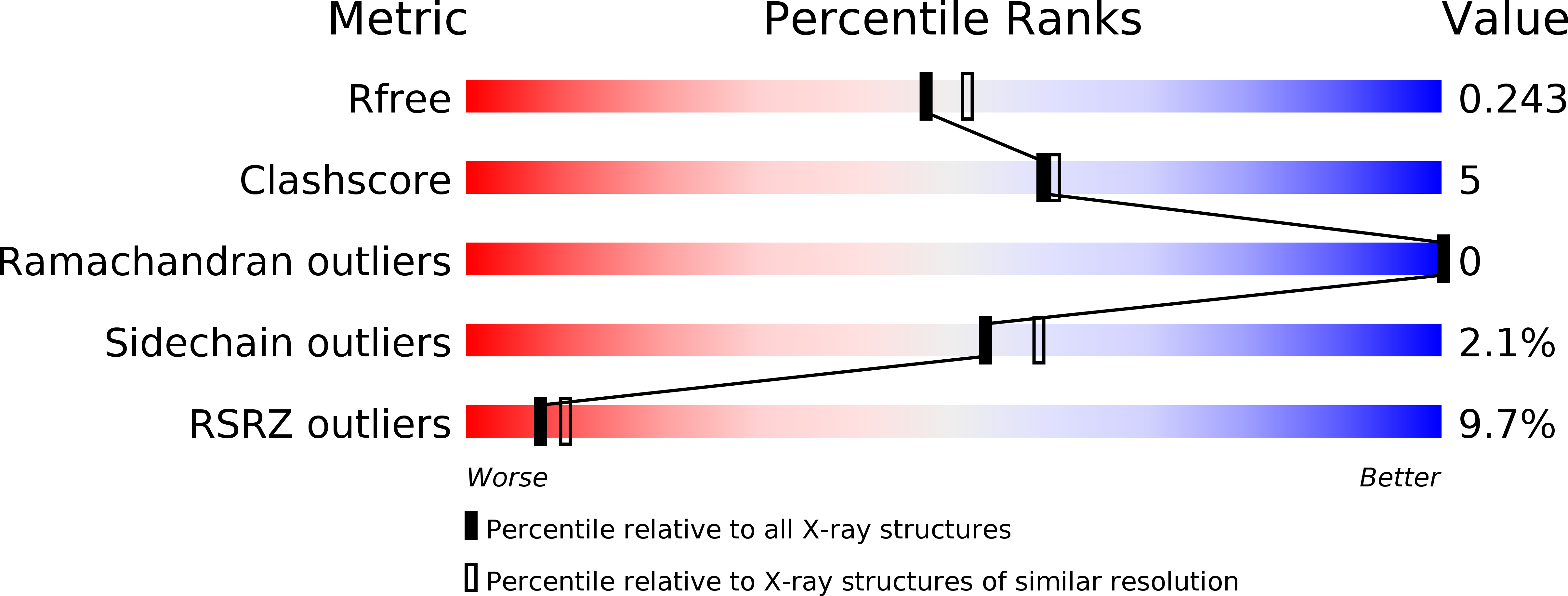
Deposition Date
2012-02-08
Release Date
2012-09-12
Last Version Date
2024-11-06
Entry Detail
PDB ID:
4DNN
Keywords:
Title:
Crystal structure of the Quaking Qua1 homodimerization domain
Biological Source:
Source Organism:
Mus musculus (Taxon ID: 10090)
Host Organism:
Method Details:
Experimental Method:
Resolution:
2.10 Å
R-Value Free:
0.25
R-Value Work:
0.21
R-Value Observed:
0.21
Space Group:
P 21 21 21


